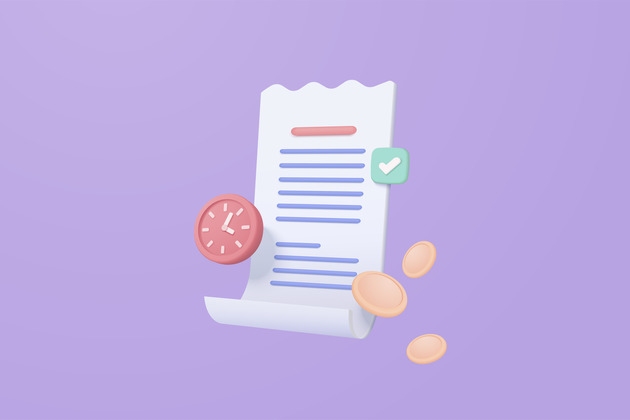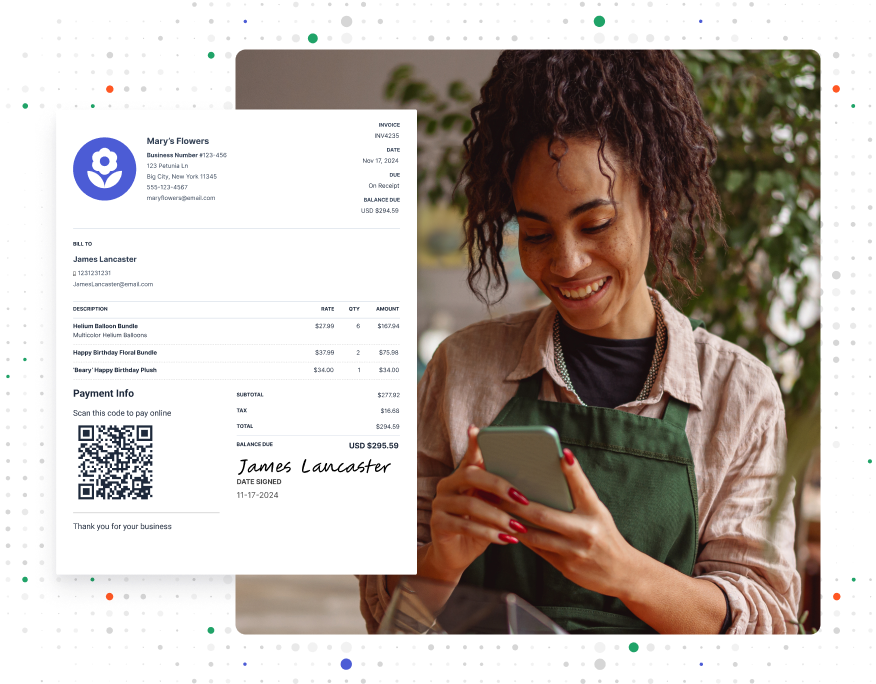What Is Remittance Advice? Everything You Need to Know

Remittance advice is the piece of the invoicing puzzle that keeps vendors and customers on the same page.
This simple document tracks payments and makes sure everything matches up for both customers and vendors. It includes key information about payment history to prove payments have been made.
In this article, we’ll break down everything you need to know about remittance advice, including what it is, why it’s important, and how to create and send one.
What Is Remittance Advice?
Remittance advice is a document that a customer sends to a vendor to confirm that they’ve paid an invoice. It acts as a proof of payment. This helps the vendor reconcile their accounts and keep track of which invoices they’ve settled.
When you make a purchase at a store, you receive a receipt that itemizes what you bought and the amount. The remittance advice acts as a receipt for businesses, showing that invoice has been paid.
A remittance advice typically includes the following key information:
- Invoice number
- Payment amount
- Payment date
- Payment method
By providing these details, remittance advice helps vendors update their records and make sure they’re accurate. If you’re a small business owner, it also helps you maintain a clear picture of your cash flow. You’ll be able to track paid invoices with ease.
RELATED ARTICLE — Invoice vs Receipt: Is an Invoice the Same as a Receipt?
What Is the Value of Remittance Advice?

Remittance advice might seem like just another piece of paperwork. But it’s actually an effective tool for maintaining a good relationship between vendors and customers. Here are some key reasons why they benefit freelancers, entrepreneurs, and anyone else sending out invoices:
- It Clarifies Payment Details. Remittance advice shows the most important details of a payment at a glance. These details enable vendors to quickly see which invoice was paid and the amount. Having this information readily available reduces the risk of confusion and disagreements.
- It Enables Accurate Record-Keeping. These documents help vendors keep their finances in order by providing written proof of payment. It creates a clear record of all transactions. This is especially useful when tax season arrives.
- It Improves Communication. When customers send remittance advice, it shows that they value the relationship and want to keep the vendor informed about payment status. This builds trust and transparency.
- It Speeds Up Payment Matching. With the information in the remittance advice, vendors can quickly match payments to the right invoices. This saves time and reduces the chance of mistakes.
- It Helps With Cash Flow Planning. Remittance advice lets vendors know when payments are received. This is critical for managing cash flow. By knowing when to expect payments, vendors can better make informed financial decisions.
Remittance advice is a valuable tool. It improves communication, accuracy, and the business relationship between vendors and customers.
RELATED ARTICLE — What is a Commercial Invoice?
What Should Remittance Advice Include?
With a good understanding of what makes remittance advice useful, let’s talk about what details it should include. Remittance advice, by definition, must include all the critical information vendors need to match payments to invoices and keep records up to date.
If you’re a customer creating a remittance advice slip, be sure to include:
- Your Company’s Name and Contact Information. This lets the vendor or business know who the payment is from and how to reach you if they have any questions.
- The Vendor’s Name and Address. Make sure this information is accurate so the remittance advice reaches the right person.
- The Invoice Number. This is the most important piece of information on the slip. It allows the vendor to match the payment to the correct invoice in their records.
- The Payment Amount. Clearly state the amount being paid. If you’re paying multiple invoices with one payment, list each invoice number and its corresponding amount.
- The Payment Date. Include the payment date for easy filing.
- The Payment Method. Specify how the payment was made, such as by check, credit card, or bank transfer. If paying by check, include the check number for reference.
Here’s a basic template for a remittance advice slip:
[Company Name]
[Company Address]
[City, State ZIP Code]
[Phone Number]
[Email Address]
[Date]
[Vendor Name]
[Vendor Address]
[City, State ZIP Code]
Invoice Number: [Invoice Number]
Payment Amount: [Payment Amount]
Payment Date: [Payment Date]
Payment Method: [Payment Method]
Including all this information on a remittance advice slip makes it easy for vendors to apply payments to the right invoices and organize their books. This improves trust between the vendors and the customer.
RELATED ARTICLE — What is an Invoice Factoring?
What Are the Different Types of Remittance Advice?
Businesses use three main types of remittance advice: basic, removable, and scannable. Each type has unique features and benefits.
- Basic Remittance Advice. This is the simplest type of remittance advice. It’s a plain document that includes all the essential payment details, such as the invoice number, payment amount, and date. Basic remittance advice is easy to create and can be sent via mail or email.
- Removable Remittance Advice. This type of remittance advice is designed to be detached from the invoice. The advice slip is typically perforated or printed on a separate piece of paper that can easily be removed and returned with the payment. The removable piece makes it easy for vendors to match payments to invoices.
- Scannable Remittance Advice. Scannable remittance advice is designed for easy electronic scanning and processing. This type of advice slip includes a barcode or other machine-readable elements for quick and accurate data entry. It’s commonly used by larger businesses that process a lot of payments.
RELATED ARTICLE — What Is a P.O. Number on an Invoice?
How To Create and Send Remittance Advice

Sending out remittance advice isn’t complicated. But here are a few key steps to follow so everything goes smoothly:
1. Gather the Necessary Information
Before you start creating your remittance advice, make sure you have all the essential details on hand. This includes the invoice number, payment amount, payment date, and payment method. You’ll also need your company’s contact information and the vendor’s name and address.
2. Choose Your Format
Decide which type of remittance advice you want to use: basic, removable, or scannable. If you’re not sure which format your vendor prefers, don’t hesitate to ask.
3. Create the Remittance Advice
Using the information you gathered in Step 1, fill out a template like the one provided above. Make sure all the details are accurate and easy to read. For scannable remittance advice, be sure to include any necessary machine-readable elements like a barcode. And before sending, double check the remittance advice for errors.
RELATED ARTICLE — 10 Common Invoicing Mistakes and How To Avoid Them
4. Send the Remittance Advice
Once your remittance advice is complete, it’s time to send it off to your vendor. There are a few different methods you can use:
- Send as a Slip. If you’re using paper remittance advice, you can include it as a slip along with your payment. This is a simple and straightforward way to ensure your vendor receives the necessary information.
- Send by Mail. Another option for paper remittance advice is to send it separately by mail. This can be a good choice if you’re not including a physical payment or want to provide more detailed information in a letter format.
- Send by Email. For electronic remittance advice, email is a quick and easy way to get the information to your vendor. Simply attach the remittance advice file to your email and send it off to the appropriate contact.
- Send by Software. If you’re using accounting or payment software, there may be built-in options for remittance advice. These tools automate the process. This ensures all the necessary information accompanies your electronic payments.
5. Follow Up as Needed
After you’ve sent your remittance advice, it’s a good idea to follow up with your vendor to confirm they received it. This is especially important if you’re sending paper remittance advice, since there’s always a risk of documents getting lost in the mail. If you don’t hear back from your vendor within a reasonable timeframe, don’t be afraid to reach out.
Fast, Professional Estimates and Invoices
As a small business owner, remittance advice is a helpful tool. But you can’t rely on your customers to organize your finances. That’s where Invoice Simple can help.
Get your invoicing done in minutes, not hours. Create estimates and invoices on the road or at home. And quickly add details such as discounts, payment instructions, due dates, photos, signatures, shipping details, and more for a headache-free process.
Start Your First
Invoice Today
Create customized and professional
invoices and connect with clients
